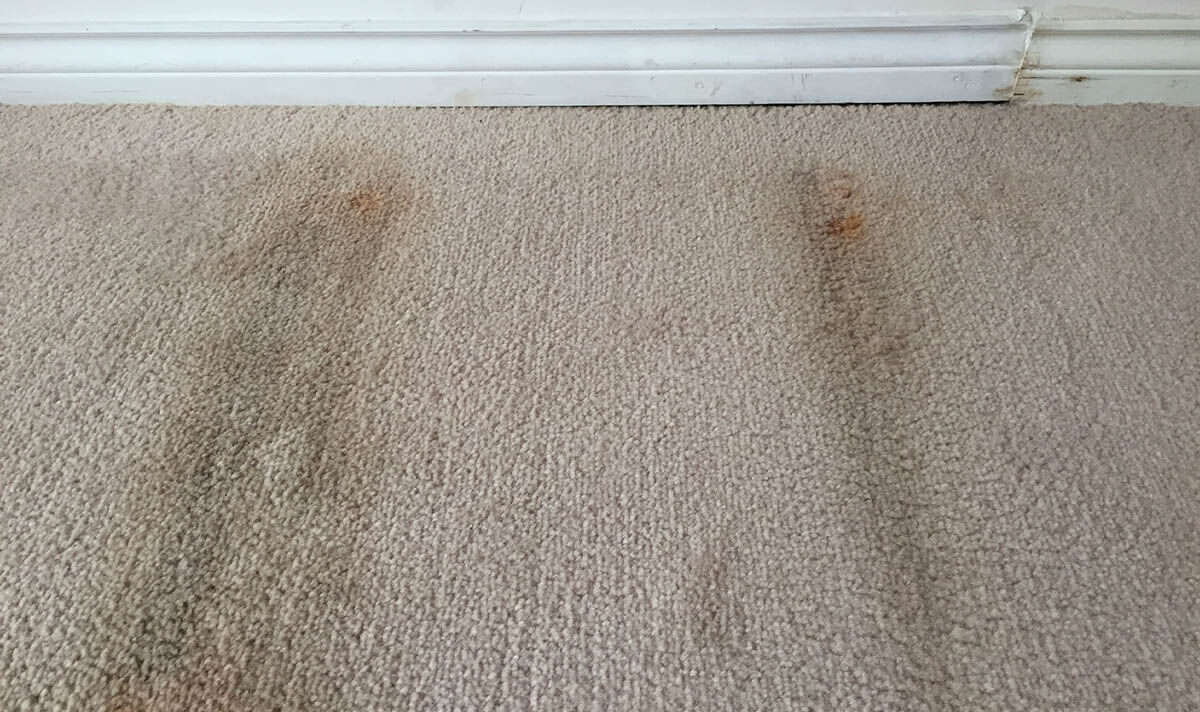Water damage and mold growth in carpets can be distressing, posing serious health risks and structural issues. Acting swiftly is crucial to minimize the damage. This comprehensive guide will walk you through step-by-step solutions to tackle these issues effectively.
Safety Precautions:
- Prioritize safety by turning off electricity in the affected area to prevent electrical hazards.
- Use protective gear like gloves, masks, and boots to avoid direct contact with contaminated water and mold.
Assessment and Documentation:
- Document the extent of the water damage and take photos or videos for insurance purposes.
- Identify the source of the water damage and fix it to prevent further issues.
- Carefully examine both sides of the carpet for any signs of mold growth. If found, consider professional mold removal services .
- This step involves visually identifying areas where mold growth has occurred. Mold can be in various colors, including black, green, or brown. It may appear fuzzy, slimy, or powdery.
- The process of removing mold involves physically cleaning and disinfecting the affected areas. This can include scrubbing surfaces with appropriate cleaning agents and, in severe cases, removing and replacing contaminated materials.
Remove Excess Water:
- Use a wet vacuum, sponges, or towels to extract as much water as possible from the carpet.
- Open windows and use fans to improve ventilation and aid in the drying process.
Lift and Remove the Carpet:
- Carefully lift the carpet to allow air circulation beneath it. Enlist help if it's a large area rug or wall-to-wall carpet.
- Inspect the padding underneath. If it's wet, it may need to be replaced.
Water Extraction and Drying:
✅ Water Extraction: Involves the removal of standing water using specialized equipment like pumps, wet/dry vacuums, or other water extraction tools. This step aims to eliminate as much excess water as possible.
✅ Drying: Once excess water is removed, the drying process begins. This may involve the use of industrial fans, dehumidifiers, and sometimes even opening windows for ventilation. The goal is to reduce moisture levels to prevent further damage and inhibit mold growth.
Cleaning and Disinfecting:
✅ Cleaning: Involves the removal of dirt, debris, and any remaining contaminants from surfaces. This can include scrubbing, wiping, and using cleaning agents appropriate for the material and situation.
✅ Disinfecting: Follows cleaning and involves the application of disinfectants to kill or neutralize remaining microorganisms. This step is crucial for preventing the growth of harmful bacteria or pathogens.
Carpet Repair or Replacement:
✅ Assessment: Initially, an evaluation is made to determine if the carpet can be salvaged. This depends on the extent of the damage and the type of material the carpet is made of.
✅ Repair: If possible, damaged sections of the carpet may be cut out and replaced. This can involve techniques like patching or re-stretching to restore the carpet's integrity.
✅ Replacement: In cases of extensive damage or if the carpet cannot be adequately cleaned or repaired, it may need to be entirely replaced.
Moisture Control and Prevention:
✅ Identification of Sources: It's important to identify and rectify the sources of moisture to prevent future issues. This could include fixing leaks, improving ventilation, or addressing drainage problems.
✅ Sealing and Waterproofing: Taking steps to seal cracks, apply waterproof coatings, or install moisture barriers can help prevent future water damage.
✅ Humidity Management: Utilizing dehumidifiers or air conditioning systems can help control indoor humidity levels, reducing the risk of moisture-related problems.
Professional Assistance and Testing:
✅ Seeking Professional Help: Especially in cases of extensive damage, it's recommended to engage professional services . This can include water damage restoration specialists, mold remediation experts, or contractors for repairs.
✅ Testing for Contaminants: Professionals may conduct tests to identify potential hazards like mold spores, asbestos, or other harmful substances. This helps in determining the appropriate steps for remediation.
✅ Compliance and Certification: Depending on local regulations, professionals may need to adhere to specific standards and obtain certifications to ensure the safety and effectiveness of their work.
Replace or Repair Damaged Components:
- If the padding is severely damaged, it's best to replace it. Clean and disinfect the subfloor before installing new padding.
- Assess the condition of the carpet. If it's heavily damaged or extensively contaminated, it may need replacement.
Prevent Future Incidents:
- Address any underlying issues, such as leaky pipes or poor ventilation, to prevent future water damage and mold growth.
- Invest in waterproofing solutions or moisture barriers where applicable.
Monitor for Recurrence:
Keep an eye on the affected area for any signs of recurring water damage or mold growth. Prompt action can prevent a reoccurrence.
By following these expert-recommended steps, you can effectively manage water damage and mold issues in your carpets. Remember, swift action and thorough attention to detail are key in restoring your living space to a safe and healthy condition. Don't hesitate to seek professional help when needed. With the right approach, you can safeguard your home from future incidents.
